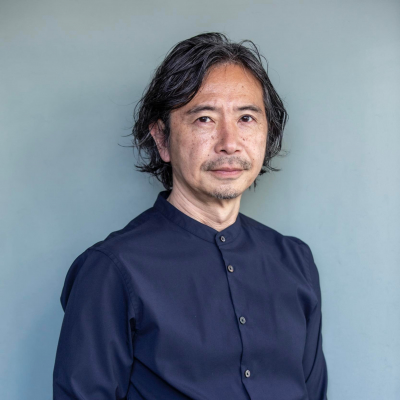
Shujiro Kusumoto
Cafe Company Inc.; Good Eat Company Inc. President
Japan can perhaps be called the country with the best food in the world.
In a global survey asking which countries people most want to visit after the pandemic, Japan was number one among people living in Asia and number two among those in Europe and the US. In both cases, Japan was at the top end of the list. Moreover, the number one reason people wish to visit Japan is said to be for its food. As this suggests, while many foreign visitors to Japan come in search of delicious food, Japan in fact has the highest number of Michelin-starred restaurants in the world. The total number of stars and three-star restaurants in Tokyo far exceeds that of Paris, which can be called the home of Michelin star framework. A characteristic of the restaurant industry in Japan is that many Japanese chefs have honed their skills not only in Japanese cuisine, but also in French, Italian, and other foreign cuisines, and have earned Michelin stars. Further, outside of Michelin stars, there are countless numbers of Japanese chefs who have won first place in international cooking competitions such as the Pasta World Championships and the World Pizza Championships. We can therefore say that Japan is the country that evolves tastes of other countries in more delicious way.
Elsewhere, Japan has an abundance of delicious, seasonal foods from both the sea and the mountains. Thanks to an excellent supply chain, customers can consume these ingredients while they are still fresh. Meanwhile, advanced fermentation techniques developed in the preserved food culture have broadened the range of umami flavors. There are many positive aspects of Japanese food, such as the diversity of food culture, which varies from region to region, including traditional and local cuisine, and the high level of “seasoning technology” in factories producing seasonings and processed foods. Alongside its “deliciousness” technology, Japanese food is also highly regarded worldwide for its health benefits and for its lower environmental impact compared to Western food. In 2005, the number of Japanese restaurants overseas stood at approximately 25,000. In 2010 this number doubled to 50,000, and expanded to 150,000 in 2020. With such wonderful characteristics, it is essential that we seriously address how to maintain and develop our globally respected food culture. Doing so can help Japanese food culture maintain its dominance over the centuries.
In a future of exploding world population, food will become a global growth industry. In this sense, Japan’s food culture can become a major competitive advantage due to its superior technology and long tradition. However, people living in Japan are yet to realize the possibilities that their food assets can bring. Resources related to food, such as expertise on natural environment, agriculture and fisheries, as well as seasoning techniques, are gradually being lost and replaced by elements from overseas. Without a vision, much like the lost decades of the past, many of our food assets will and quietly disappear without being passed on, perhaps within several years from now.
How, then, should we utilize Japan’s food assets?
One key to doing so will be the sharing of a vision. I have termed this approach Japan’s Delicious Future Strategy. Clarifying the route to becoming a “delicious economic power” is an important growth strategy for Japan’s era of so-called degrowth.
In contrast to skyrocketing global populations, Japan is facing an unprecedented population decline caused by low birthrates and an aging population. I believe that the best and most positive strategy to utilize Japan’s existing assets is to combine accumulated food traditions and techniques in a new way, based on the excellent asset of “Japanese food”, to create the abovementioned delicious economic power. Japanese society today is operating under a system that was established in the era of mass production and mass consumption, and is based on the assumption that the population will increase. It is only natural that problems will occur if we try to maintain this system in a declining population. We must therefore switch our mindset and consider a way of life that ensures happiness even with fewer people.
Meanwhile, some countries around the world are learning from Japanese food. One such example is The Culinary Institute of America, also known as the Harvard of culinary schools in America. This is because Japanese food is delicious, sustainable, and healthy, which are the elements that Japan does best. A truly enjoyable lifestyle is one that satisfies both physical and mental health. Eating a delicious and healthy meal with friends in a natural environment can bring the same level of pleasure and satisfaction as any form of entertainment.
As the world’s first self-sustaining community, the ReGen Village in the Netherlands have succeeded in attracting the wealthy. In Estonia, meanwhile, the e-Residency system allows access to the country’s transparent business environment, which is favored by many leading companies. Considering what Japan can do, there is great potential if we seriously promote the healthy and delicious aspects of our food culture. If we can provide healthy, delicious experiences, and demonstrate the evidence behind it, visitors will no doubt come flocking. Further, when tourists look for a destination, Japan has a certain advantage over other potential destinations because of its safety, cleanliness, and food safety and security. Regardless of tourism, there are many elements that make up attractive communities in Japan. Incorporating such people into an ecosystem like those seen in the Netherlands and Estonia can help Japan become an entirely new, delicious economic power.
It’s easy to boast that Japanese cuisine and Japanese food is the best. That said, the origins of Japanese food can be found in many different Asian food cultures. A Meiji-period philosopher Okakura Tenshin said in his The Book of Tea, published in New York, “The Western world, which is superior to nature, must learn from the Eastern way of thinking, which is one with nature and coexist with it.” Rather than making the way of life in harmony with nature and the joy of healthy and delicious food as uniquely Japanese elements, it’s important to communicate them to the world while respecting the awareness that Japan has received these benefits from Asia. Further, contributing to the resolution of issues in East Asian countries struggling with declining birthrates and aging populations next to Japan is something that only Japan can do, and it will also help to cultivate a sense of leadership.
To conclude, I would like to introduce my ten guiding principles to ensure Japan to become a delicious economic power. While these are guidelines for Japanese food, at the same time they are also domestic economic measures and that they will help Japan contribute to the international society in a uniquely Japanese way. These ten guiding principles aim to enhance the Japanese brand and generate a positive, global cycle through food.
==
1. Geo Gastronomy
With mountains of varying heights, broad ocean areas and powerful ocean currents, and diverse regional characteristics filled with nature’s blessings, Japan is home to water and land that are full of vitality. The purity of the cuisine nurtured by this water and land, strength of the ingredients, and delightful tastes should be expressed by each region.
2. Seasonality
Humans have lived in harmony with nature in each of the four seasons for thousands of years. It is important to review this history, look forward to spring, and be thankful for the autumnal harvest. For the future, we must sharpen the emotions and rhythms associated with the seasonal changes unique to Asia, such as the 24solar terms and the 72 solar terms.
3. Satoyama and Satoumi Lifestyles
It is important to share our appreciation to our ancestors for creating the satoumi ecosystems, and to pay respect to the activities to connect it to the future. We must position these ecosystems as universal models of successful life and food cycles, and strive to disseminate these models worldwide.
4. Carrying on a Healthy Food Culture
Japan and other Asian countries have developed various food and lifestyle cultures, such as fermented foods and fermentation technology, that have been created for health and happiness. We must therefore interpret these wisdoms as new recipes, pass them on with children of the next generation, enhance the platform for research and practice to share, and expand opportunities for learning.
5. Tolerance of Cultural Diversity
As seen in its respect for various gods (kami) and coexistence with nature, Japan has incorporated various foreign cultures into its life and developed them over time. It is important that we maintain this diverse and generous curiosity and fulfill our role as a gastronomy hub connecting the world’s food cultures with “delicious” food.
6. Global Perspective
We must always be aware of future food issues and changes in values and tastes, and consider how the characteristics of Japan’s regional foods can co-create and synchronize with the world while contributing to its development. We must spare no effort to establish such everlasting relationships.
7. SDGs
Japanese food culture is environmentally friendly and healthy, and has the potential to be a solution for sustainability. On the other hand, we must be ready to confront problems unique to Japan, such as food waste, so that we can realize a fully circular society.
8. Branding and Design
It is important to strengthen communication and brand strategies in all food categories by utilizing IT and design. In turn, we must contribute to the branding of not only food, but also Japan as a whole, by creating various stories related to food and communicate them to the world.
9. Utilization of Technology
By combining the techniques of artisans that poduce unique Japanese tastes with cutting-edge technologies such as AI and food tech, we must bring together the wisdom of all those involved in food, aim to create intellectual property, and promote the creation of a delicious global community with which the world can interact.
10. Creation of a Food Industry Community
We must position the creation of the world’s most delicious society at the core of Japan’s growth society by collaborating with a multitude of stakeholders such as from various industries -including not only food service, agriculture, fisheries, food-related companies and retailers, but also entertainment companies, electrical appliance stores and mobility businesses-, academia and politicians.
The most important thing is to value the pleasure that food brings, the pleasure that interaction brings, and the pleasure that life brings. This is the key to Japan’s future growth strategy.







